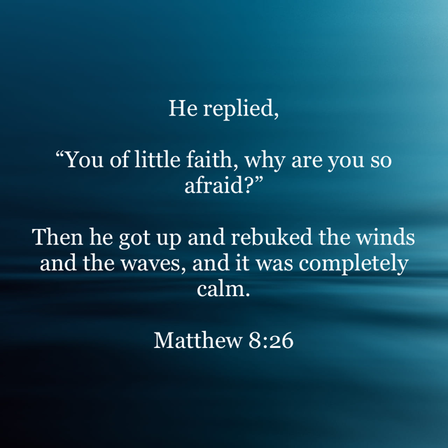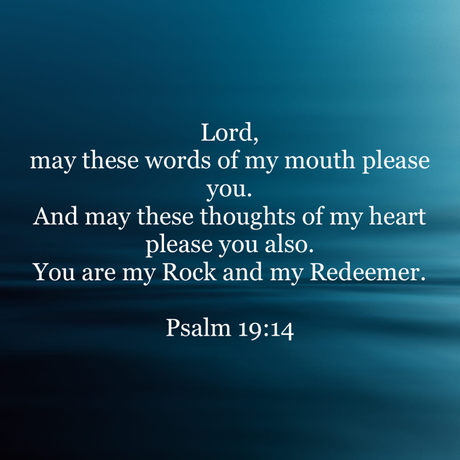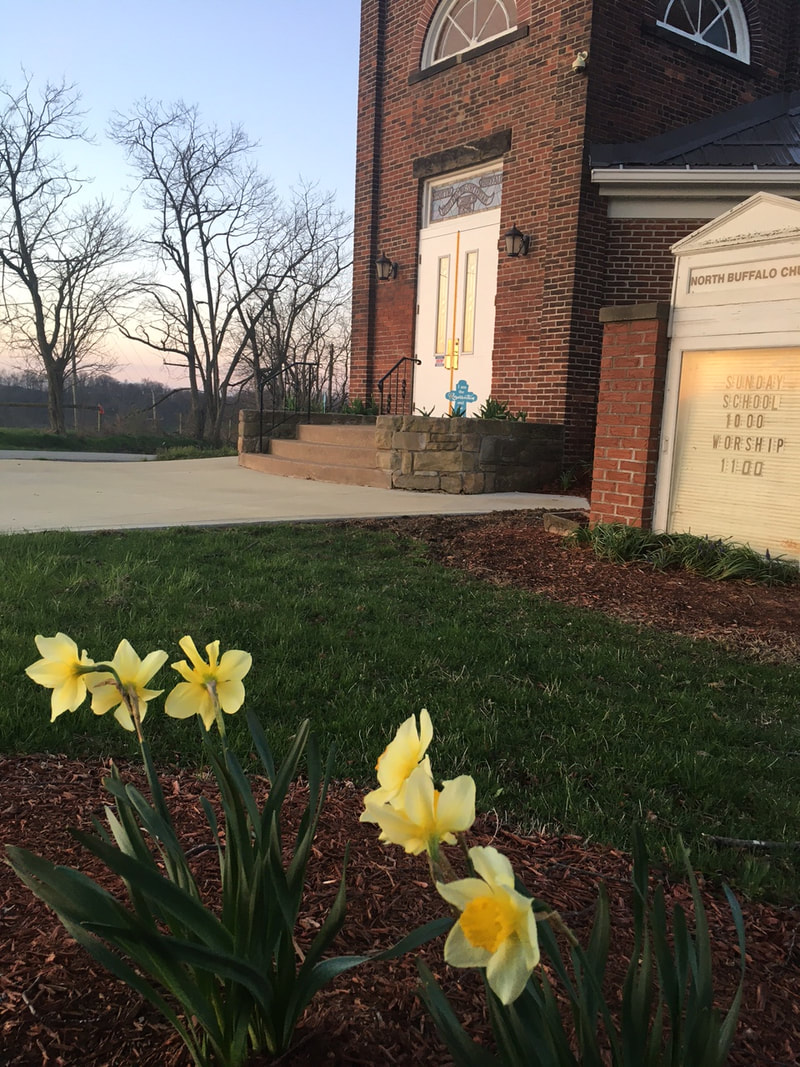|
Good morning!
We're so glad that you've joined us today!
When we meet together in person, we share our joys and concerns with each other before we focus on our Sunday school lesson. Think about your needs and concerns right now, and if you like, you can share them in the comments.
Today’s lesson is about how Jesus calmed a storm on the Sea of Galilee when his disciples were afraid. In the United States, it seems, we are just emerging from a year like no other, when we had to isolate for fear of sickness or even death. Now many people are going through personal crises involving loss of income and unknown futures. At our church, we are beginning the search for a new pastor. All these uncertainties can inspire fear. But today’s lesson calls us to trust God in the midst of fearful situations. Identify what your fears are today. Then ask God to give you peace in the midst of the storm and to know that God is able and willing to help us. The prayer below may serve to guide us in our opening prayer. It is from the My Redeemer Lives website.
O God who is greater than the most powerful forces in this world, enable us to be still and know that You are God. O Lord who answers out of the whirlwind of everyday life, breathe in us Your Holy Spirit to strengthen, comfort, and guide us in the midst of the storm. O still, small voice, speak to us this hour, that we might become makers of Your peace in our homes, in our communities, in our world. We pray all this in the name of the One who calmed the raging sea. Amen.
This week's lesson is on Matthew 8:23-27.
Introduction: What are you afraid of? Context can cause the question above to be answered in different ways. It all depends on when, where, why, how and by whom it is asked. As an honest inquiry into what causes fear, we know that people experience fears of various kinds. Some common fears are fears of open spaces (agoraphobia) and closed spaces (claustrophobia). Much rarer is a fear of dogs (cynophobia) and of cats (ailurophobia). Between these two is a list that is virtually endless. And fears are very individualized. Sometimes they seem to make little sense — such as fear of mice on the part of a strong, smart person. Fears may be connected with traumas that have left an indelible mark on a person. There is another way we can use the title question: it can be meant rhetorically — as a statement rather than a question. The sense is something like, “You know that you have no reason to be afraid.” We all wish that we could say this to ourselves and our fears would disappear. Unfortunately, fear tends to persist even when we try to reason ourselves out of it. Fear, as a God-given self-defense mechanism, can trigger a reaction of flight, flight or freeze. The problem is that the particular reaction that results may be irrationally inappropriate or even harmful in a given context. At lower levels, chronic fear can ruin appetite, raise blood pressure, and cause ulcers. Fear itself can kill. Our text today is about a situation that provoked fear: the fear of death in a deadly situation. How Jesus spoke and acted in the face of that fear can teach us much about the Lord we serve. Lesson Context: Sea of Galilee Jesus’ ministry in Matthew’s Gospel takes place mostly in Galilee, the northern portion of ancient Israel. The region was named for the body of water at its center, known in the New Testament as the Sea of Galilee or the Sea of Tiberias (John 6:1). It is about 41,000 acres in size, about 12 miles north to south and 7.5 mile east to west. Its size makes it more of a lake than a sea; by contrast, Lake Erie is about 150 times larger than the Sea of Galilee. Indeed, the latter is referred to as “the Lake of Gennesaret” in Luke 5:1. Nestled between steep hills on the east and west, one could stand on the hills and see to the other side. The distance would require much effort to row from one side to the other. The Sea of Galilee was a center of fishing during the time of Jesus. Some of his 12 disciples hd been fishermen there (Matthew 4:18-22). These men had much experience with this lake and its dangers. In addition to fishing, the inhabitants of the area used the lake as a medium of transportation from one village to another. Rowing across the sea was faster than the alternative of walking around on shore. We can imagine that on a typical day the sea was dotted with small boats — some fishing, some carrying travelers. On most days, those boats carried their passengers safely. Lesson Context: Miracles Following the Sermon on the Mount in Matthew 5-7, which sets forth Jesus’ authority in teaching, chapters 8-9 focus largely on Jesus’ miracles. These demonstrate his authority in actions as they consistently pointed to a power that could belong to God alone. With a word, Jesus was able to heal the sick (Matthew 8:5-13), cleanse leprosy (Luke 17:12-19), cast out evil spirits (Mark 7:24-30), and command the forces of nature (Mark 11:12-14, 19-21). His miracles established that Jesus was either the most wonderful prophet ever sent by God or that he was something more than a prophet. Jesus did not use his divine power for his own benefit (compare Matthew 4:1-11, 26:53). His miracles were for the sake of others, especially those whose situations were hopeless. As such, the miracles were signs that God’s kingdom — his promised reign over all creation that restores his righteous purpose — was breaking into the world. God’s reign would vanquish the sin-threat and its consequences. God’s people would then live in his presence, safe and secure, for eternity. Jesus’ miracles demonstrated that promised future. His enemies attributed his ability to satanic powers (Matthew 12:24) and mocked him (Matthew 27:42). Still, Jesus made salvation possible by giving of his life. His resulting resurrection was his greatest act of power. But as we begin today’s text, that is yet a year or so in the future. (The events of today’s text are also recorded in Mark 4:35-41 and Luke 8:22-25).
The Perilous Situation (verses 23 and 24)
A. Following Jesus (verse 23) Just before this story, Jesus encountered two men as he was about to cross the lake in a boat. They both wanted to follow Jesus, but Jesus pointed out the cost of doing so. It is unclear if either of the men chose to follow him. Now his disciples follow him into the boat. Matthew does not say, at this point, where Jesus is going. We have to wait until Matthew 8:28 to discover they are headed to “the region of the Gadarenes” on the other side of the lake. Although the term disciple refers to anyone who is a learner of his or her master’s teachings, these followers are probably his 12 original disciples. They were not chosen because were exemplary in every way. Like us, they largely fail to understand Jesus’ mission, they are often fearful and spiritually deaf. They continued to misunderstand his mission at least up until the time of his ascension. B. In a Deadly Storm (verse 24) Because of the surrounding hills, it is hard to see an approaching storms, meaning that even experienced boatman are often surprised by sudden storms. In 1986, a first century fishing boat (27 feet long and eight feet wide) was discovered along the shore. Waves of just a couple of feet could overwhelm such a vessel. In deep water far from shore, these men faced death if their boat did not stay afloat. But somehow Jesus was sleeping through the rain, wind, waves, and noise. It may be that Jesus’ stamina was drained, making it possible for him to sleep through anything. We don’t know. But more importantly, Jesus shows no fear because he truly has no reason to fear. We can safely assume a deadly storm would awaken most of us, but Jesus experienced a freedom from fear unlike any in our ordinary experience. This surely points to Jesus’ confidence in his identity. Jesus knew his mission was leading him to the cross; he would not die at sea. Question: Under what circumstances should you not allow another person’s fear to become your own? Why? II. The Act of Deliverance (verses 25 to 27) The disciples registered their peril. Their skills were not enough to protect them. They believed they were all going to die! They could not comprehend how Jesus could sleep because they did not yet understand Jesus’ identity. The disciples needed someone more powerful, and to their credit they at least knew who that person was. Certainly the disciples had much still to learn about who Jesus is. Even when Peter declared Jesus to be the “Messiah, the Son of the living God” in Matthew 16:6, the disciple immediately showed he did not understand what it meant. Still, the disciples already knew enough to call him Lord — one superior to them in authority in some way. The disciples cry out for Jesus to save them. It is a term that was used to refer to all kinds of rescuing, including the Roman Empire’s brutal “saving” of the people by the Pax Romana. Many Christians use it almost exclusively to mean salvation from sin and death, but the disciples were clearly asking Jesus to save them from drowning in the stormy sea. We too cry out to Jesus in this way at times. We also fear perishing physically because of events — some of our own making — in this sin-sick world. When we look at the disciples in this account, in many ways we are looking in the mirror. The disciples had reason to trust Jesus in the storm. He had already demonstrated his mighty power. But their fear stemmed from their “little faith.” The term is used five times in the Gospels, and it is a mild rebuke. If they had much faith, they could trust that Jesus would act for them, even if he did not act immediately. Sadly this would not be the last time Jesus would chastise them in this regard. Jesus’ words challenged the disciples to let their faith grow to fit the magnitude of their Lord’s power and his gracious good will to act on their behalf. In Matthew 17:20, Jesus says that faith as small as a mustard seed could move a mountain. Little faith has potential, but in this case fear weakened it. Then Jesus got up and rebuked the winds and the waves. Jesus saves the small of faith even as he urges them to have greater faith. Although having little faith may seem dangerously close to having no faith, paradoxically, we can have belief and unbelief simultaneously (Mark 9:24) Jesus’ followers went on to face many perilous situations that could easily — and often did — take their lives. They ultimately learned to rely on Jesus to restore life by resurrection. Jesus will always use his divine power for the long-term benefit of those who love him. This is true even when — or especially when — the situation seems hopeless and he seems unresponsive to our need. Question: How would you respond to someone who takes today’s text to mean we shouldn’t bother to wear life jackets when out boating because Jesus is always with us? As God’s words put the waters of the sea into their place (Genesis 1:9-10), so Jesus’ words did with the storm. That the Creator is able to command his own creation in a miraculous way should not surprise us. But witnessing Jesus’ power at work strikes the disciples with awe. This is a frequent reaction when people see Jesus’ power at work in the form of miracles and in word. The disciples recognized that Jesus’ actions were not the work of an ordinary man. Today we might call what the disciples were experiencing “cognitive dissonance.” What they saw did not match their normal, day to day, experience. Storms do not obey human commands. Psalm 107:23-32 describes a scene much like the one the disciples experienced. Men went out to sea, witnessing the wonders of the waters God created. A storm arose, lifting huge waves, provoking terror in the sailors. They cried out to the Lord, the God of Israel, for protection. God stilled the storm, eliciting joy and thanksgiving from those whose lives had been spared. There was no doubt who had saved them. Jesus had just done what the psalmist described God as doing. One the one who created the wind and the waves in the first place can command them. In Jesus, God had become a man. Because of his mighty power that he graciously exercised on humanity’s behalf, they had nothing to fear. Conclusion: Faith Silences Fear What do you fear? Typically, the things that make us more afraid are those that threaten us in some way because we can’t control them. Instead of praying first, we first try our best to gain control. But in the end we recognize that our control is very limited. Disease stalks even those who eat right and exercise. Financial crises strike even the prudent. Accidents happen to the careful. Our protective tech cannot constantly extend as far as those we love. There is a far superior alternative to trying to maintain control over our circumstances first and, when that fails, turning to the Lord. The alternative is to reverse those priorities. Because Jesus gave his life for us, we can surely trust him to do for us what he did for 12 men of little faith in a small boat — and more. The created world is filled with mortal dangers. Our reaction should be that of the psalmist: “Whoever dwells in the shelter of the Most High will rest in the shadow of the Almighty. I will say of the Lord, ‘He is my refuge and my fortress, my God, in whom I trust.’ Surely he will save you from the fowler’s snare and from the deadly pestilence (Psalm 91:1-3). Question: What action will you take to overcome your most troubling fear? Prayer: Lord God, we confess that we are a fearful people. Our faith is small. Help us grow in faith as we freely confess our mixture of belief and unbelief as did the man in Mark 9:24 as we entrust ourselves to you. In Jesus’ name we pray. Amen.
Benediction
Our benediction this week is from the New International Readers' Version.
Next week's lesson will be on Matthew 9:18-26.
0 Comments
Leave a Reply. |
AuthorWe are a small, rural Presbyterian church in southwestern Pennsylvania. Archives
July 2024
Categories
All
|



 RSS Feed
RSS Feed